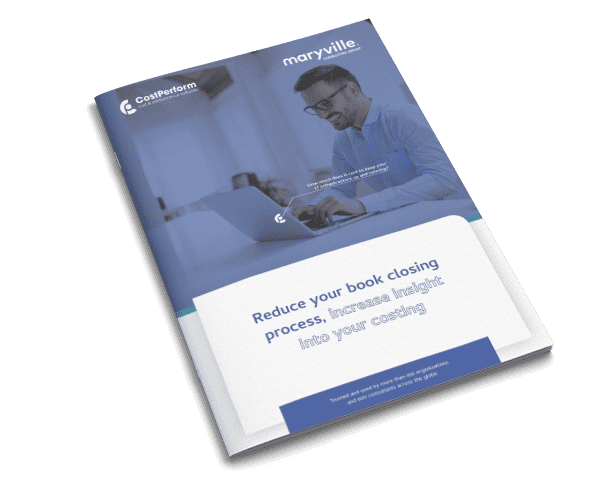Across a broad set of industries, AI has been all the rage for quite a few years now. ChatGPT has come and established itself as a well-known tool, and more specialized AI’s and startups have popped up left right and center. But with trillions of dollars of investment still heading toward AI ventures, new software and implementation, we have to ask; are we letting the hype overshadow the reality? The answer is not a resounding yes or no. CFO’s should by no means overlook AI, but it may not be the most likely source of a strategic edge.
What is AI?
Before going into more depth, it’s useful to land on a definition for Artificial Intelligence, particularly within the context of large enterprise finances. This collection of data-fed machine learning programs, advanced algorithms and “smart” computers can be given a much simpler label. For most enterprise uses, AI is pattern recognition. So while making a strategic decision on whether to invest in an AI implementation to a given area of your business, ask yourself, “could this function benefit from advanced pattern recognition?”
AI vs Reality: A Cautionary tale
In 1996, while Bill Clinton was securing a second term in office and Independence Day a box office smash, a revolution was underway in computing. IBM’s chess computer Deep Blue achieved a landmark win against Gary Kasparov, a world champion. The world was convinced that this was the beginning of the end for the game of chess. Who cares about World Championships in a world where the computers are better? Fast forward to today—the fears and expectations have not played out. Chess greats like Magnus Carlsen incorporate AI in their training regimes, but advantages still come from strategic human insight. If every pro follows the machine – every game ends in a draw. Might business be on the same track?
The Cost of AI: Unknown and Exorbitant
Bringing things back to the enterprise context in 2024 – we have clear metrics to address. Return on Investment (ROI) is an indicator that any CFO will be substantially, or even exclusively, concerned with prior to beginning any initiative. How much is this going to cost? What benefits can it bring? AI initiatives bring an unknown element to costs, sometimes initially, but particularly on an on-going basis. When every query has to be intensively computed, perhaps in a remote AI computing center in rural Ireland, costs can stack up enormously. According to Gartner, AI projects have in some instances overrun initial cost estimates by 500-1000%.
The Organizational Challenge
Yet the real hurdle with AI isn’t just the costs—it’s how well organizations can integrate and leverage the benefits. Many businesses, particularly large organizations, can struggle with inertia and rigid mindsets and fail to bring out the best of AI. Employees may fear AI due to its complexity and changes it brings. And limited buy-in leads to limited success. In many instances, employees have resisted automation because they actually enjoy the manual component of their roles. They don’t want to be replaced. Like the earlier example of chess, the successful organization of the future will empower human work with AI, not replace it. We need to be careful to remind employers their human insight will continue to be of value.
Day-to-Day vs Game Changing Tech
A key framework to be aware of in AI implementations is the distinction between day-today operational tools and truly game changing AI. Rewinding to the definition of AI as “pattern recognition” would place AI initiatives towards success on the operational level than providing that Game Changing insight. It’s not a silver bullet, and doesn’t contain real “intelligence”. Of course, that doesn’t mean you totally neglect AI for proven implementations, but be sure to remain cautious if you’re being sold a “Game Changing” solution on the strategic insight level.
AI solutions placed on a four-point technology definition framework.
Beyond the Buzz: Practical Solutions for a CFO
Instead of jumping straight onto the AI bandwagon, consider alternatives with a more predictable and tangible ROI and value proposition. A part of our role as CFOs is to keep the business moving in the right direction with optimal allocation of resources, so sometimes that means we must slow the business down if the direction its moving presents excessive risk. Focusing on organizational initiatives, non-AI implementations or adopting AI more slowly than your peers may be the right solution to mitigate risk. Investing in technology with unpredictable costs leading to potential misalignment can damage the organization.
Why You Can Afford to Do Nothing
AI is certainly impressive, and its uses are creeping into organizations on the operational level, with or without our guidance as CFO’s. Tools like ChatGPT cannot be policed, and employees will continue to steadily integrate AI into their workflows on the day-to-day basis. On the strategic level of the enterprise, don’t get left behind, but it might be best to move more slowly and steadily. Leverage tried and tested initiatives, and don’t feel the need to be the early adopter. After all, AI isn’t going to give you that long standing strategic advantage.
To learn about CostPerform’s market leading technology product, click here to understand more about Cost Allocation, or click here to request a demo
